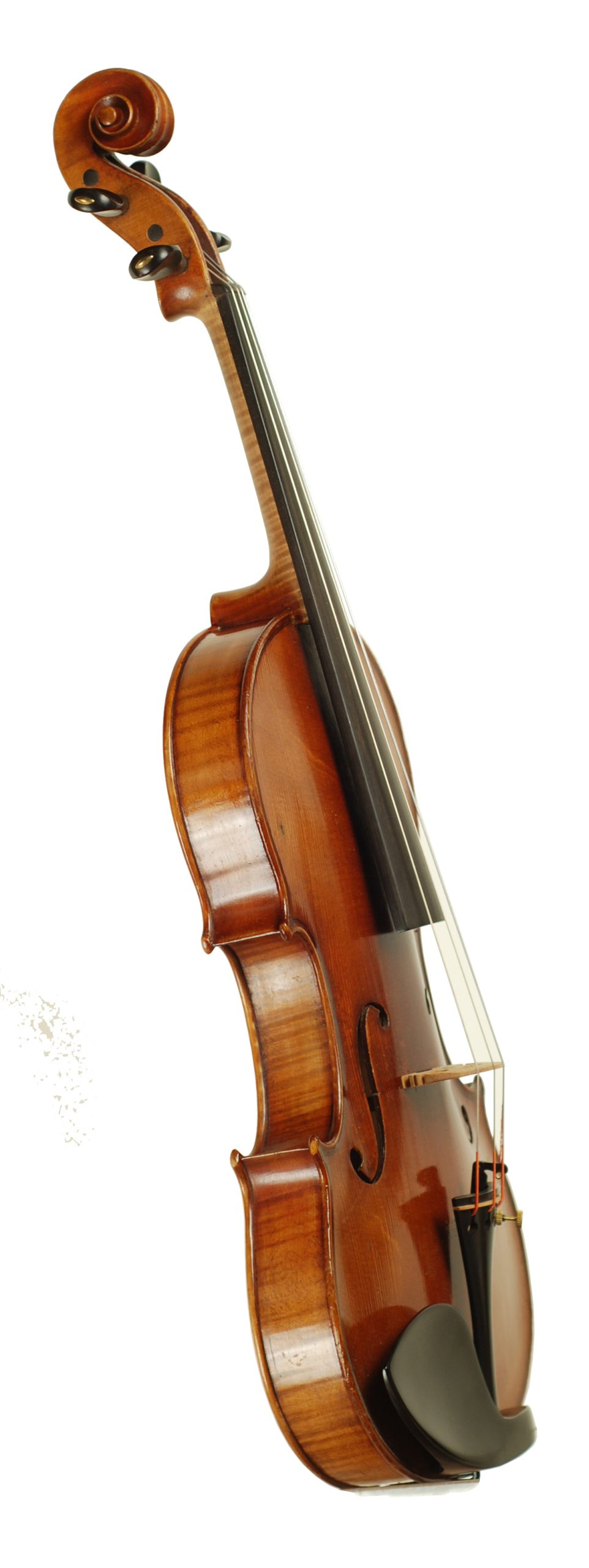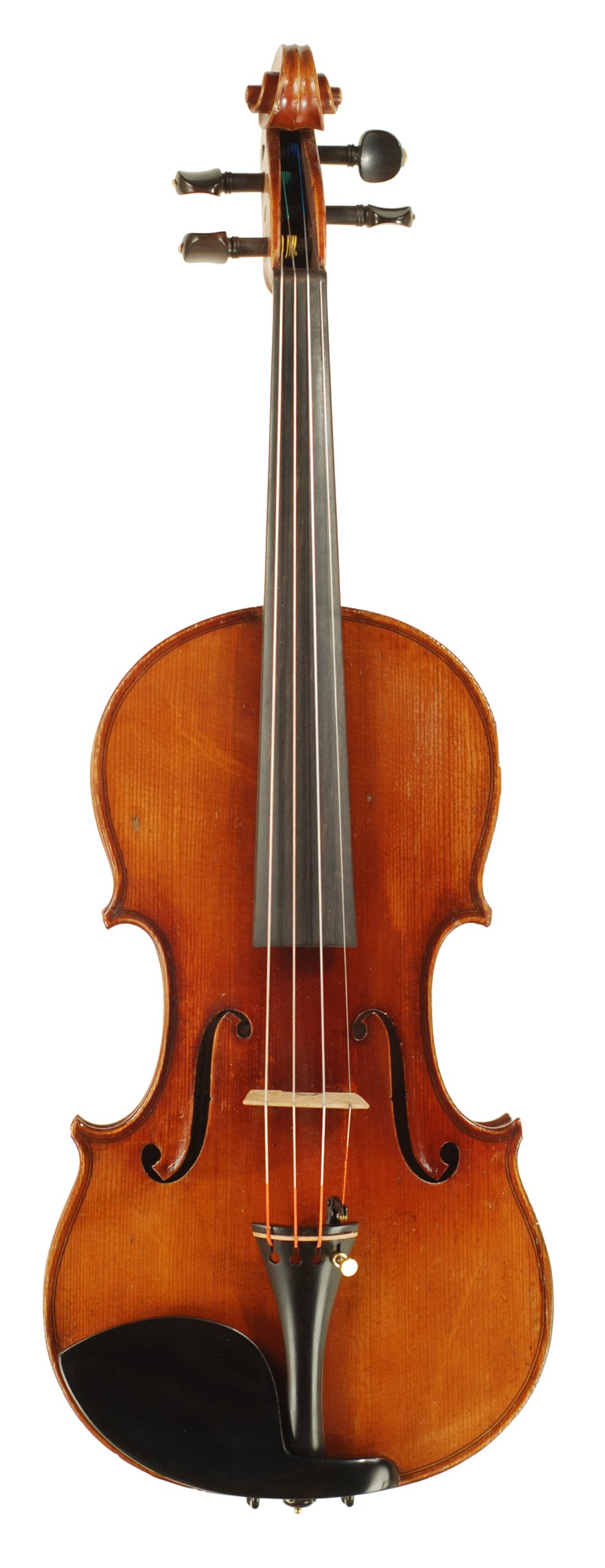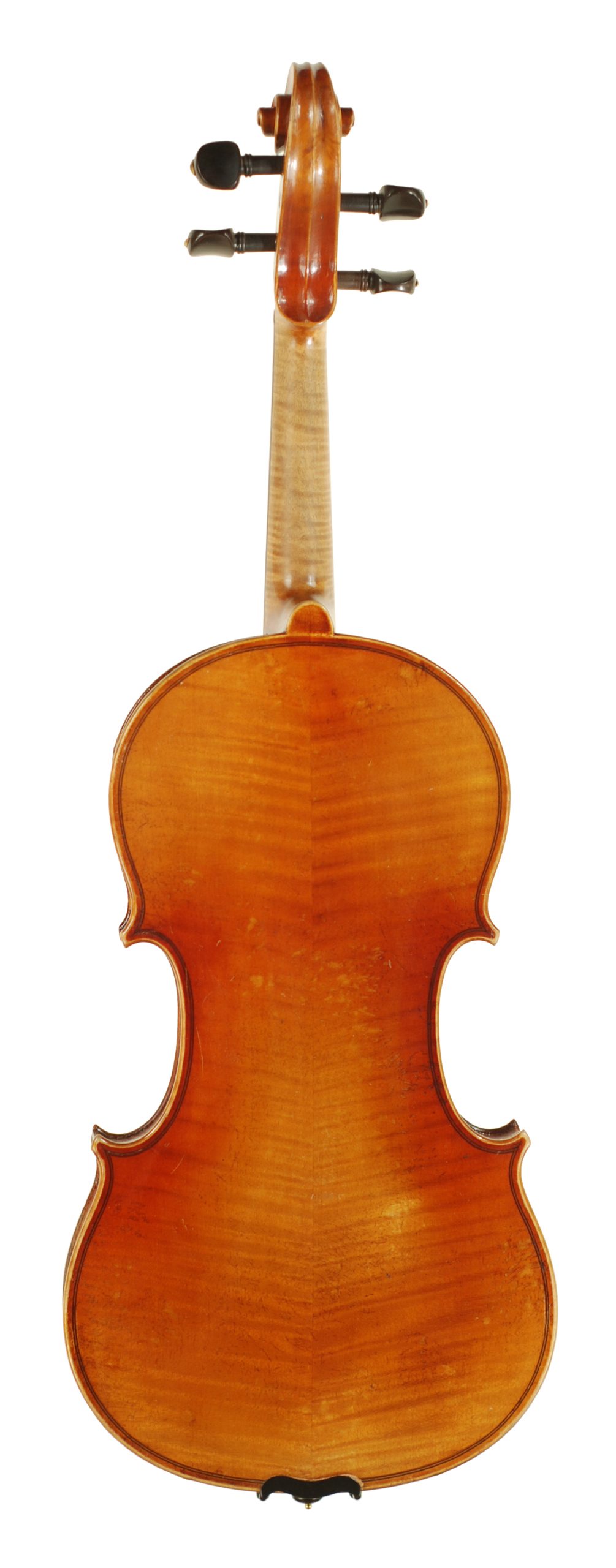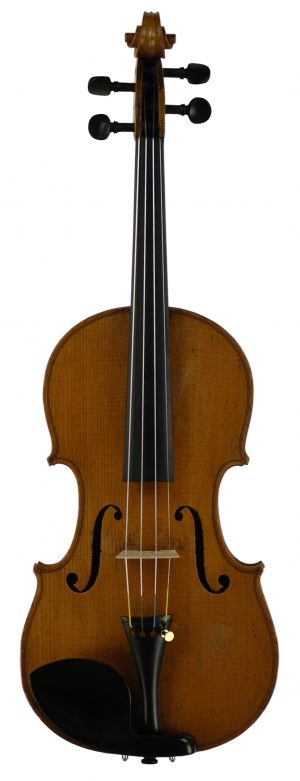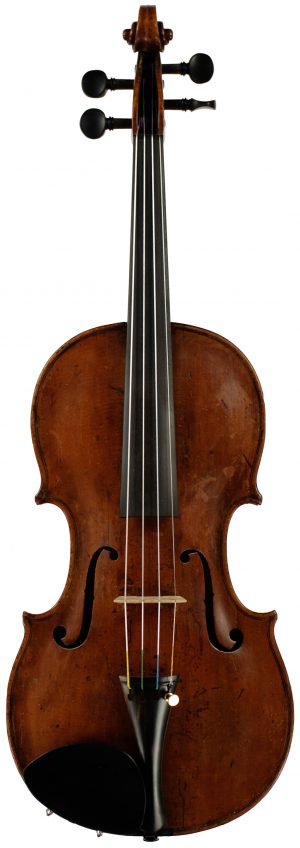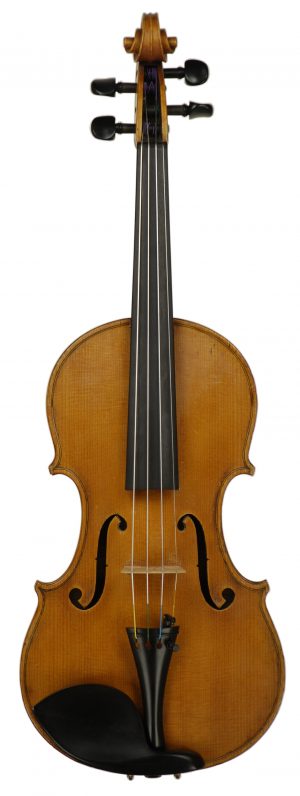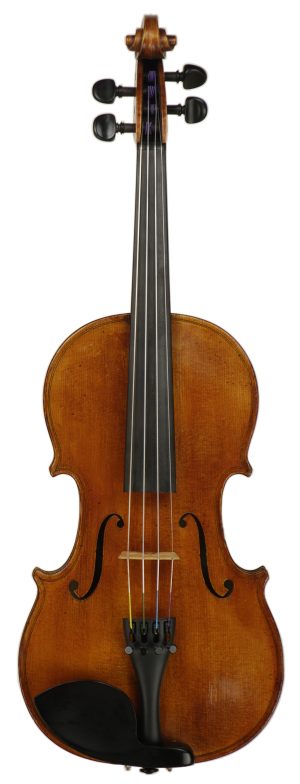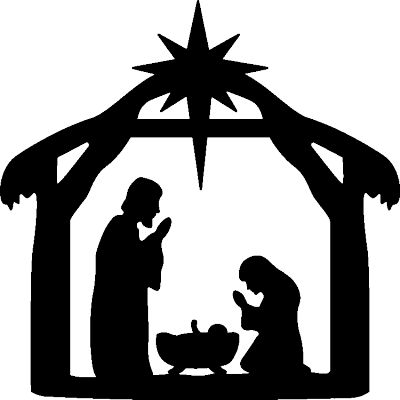E. Reinhold Schmidt Violin – Markneukirchen/Saxony circa 1900
$5,600.00
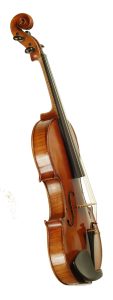
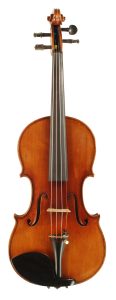
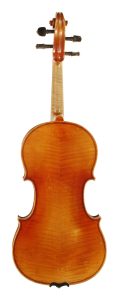
This is an Antonius Stradivarius model violin made by Ernst Reinhold Schmidt (1857-1928) and is an excellent example of Markneukirchen workmanship. Schmidt lived and worked in the famous region where the wood was plentiful and the level of making was very high. This standard was maintained because of the quality of makers, makers that just didn’t settle, always striving to do better, and a violin makers guild system that was put in place hundreds of years earlier. E. Reinhold Schmidt founded his company in 1880 and his son joined him in 1920. E. R. Schmidt was a successful company in Markneukirchen, a standout among the hundreds of small shops. The Schmidt shop made a significant influence on the Markneukirchen area. The quality of their instruments was internationally a benchmark to many, especially in the States. In 1892 Schmidt was awarded a gold medal at the Vienna Exhibition and again in Leipzig in 1913. The Schmidt shop instruments earned their success because of their good training, experience in making, and their talent as masters of their craft. This shop had high standards and frequently held back instruments not to sell if they did not reach the correct sound potential they were looking for. Sounds like a quality control division back in the 1800’s. I would think it came down to Reinhold making the final decision. The shop was never larger than 12 workers and by 1920 Reinhold’s son had joined the firm and eventually would take over.
This violin would have been imported into our country via New York City. The woods in this violin are very nice. The spruce top plate is premium with the grain being straight, very fine grain at the center seam and broadening at both flanks. The two-piece back has a generous amount of flame that jumps, with the flame ascending from the center seam. The ribs match in degree of the flame. The neck and scroll show a lot of handwork, with some tool marks still visible inside the peg box. The instrument has an oil varnish which has developed a lovely patina and shows some signs of playing wear. Which to me is a good sign. The varnish also has a red/brown mustache from the maker in between the fingerboard and the bridge. The golden/orange/amber/ brown color are the primary base hues of the first layer of varnish. The secondary layers compliment the base with an orange/brown color that has darker content. But it is still very transparent. It is rich in depth. The violin is in very good condition, and we have gone over everything about the instrument. We gave the violin a new set up, starting with the ebony pegs, and we added brass helms to the ends, a new Despiau bridge and soundpost, new tailpiece and chin rest, and added Rondo strings to help boost the bottom end and add strength and power to the treble side.
Corpus 357.0 mm., Major Width 206.5mm., Minor Width 167.0 mm., Rib Height 29.0-30.0 mm.
The sound is full of overtones and loves to be heard in all the voices. I love the power of the bottom end, its response and its slight edginess, which helps the instrument really ring. The sound is equally as beautiful on the treble side too. The E and A strings I found really responded to a bow with slightly more weight above 61.0 grams. The entire instrument speaks well: this instrument has depth of sound, a sweet tone that will hold its own in an orchestral section, and would be a nice addition for an up-and-coming player.
